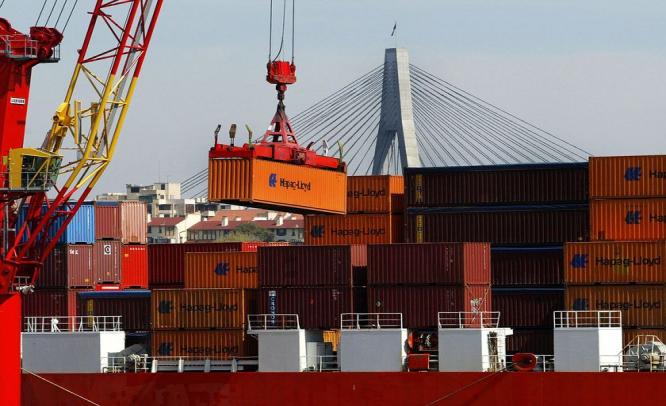Current Account Deficit on track to stay close to 2% of GDP this fiscal as bullion import curbs pull down imports, reports Team IFM
New Delhi, February 11: India halved its trade deficit last month compared to a year-ago period, riding a massive fall in imports even as export growth remained sluggish, government data released here on Tuesday said.
A 77 percent plunge in bullion imports thanks to import restrictions on gold, primarily the 80:20 scheme notified by India’s central bank that requires importers to re-export 20 percent of any gold brought into the country before they can import further, pushed down total imports by 18.9 per cent in January 2014 compared to the month before.
This, in turn, pulled down the trade deficit to $9.92 billion, almost half of the $18.97 billion deficit in January, 2013, and even lower than the $10.14 billion in December, 2013.
Exports, on the other hand grew by only 3.79 percent primarily because of a 17.42 percent decline in exports of readymade garments, a 13 percent decline in gem and jewellery, and a 9.39 percent decline in petroleum exports.
“The continued upward trend in exports and the sharp decline in the trade deficit is a cause for satisfaction,” said Commerce Secretary Rajeev Kher, while addressing the media on Tuesday. India’s exports have seen a steady month-on-month increase since November 2013.
A report in The Economic Times quoted Soumya Kanti Ghosh, chief economic adviser, State Bank of India, as saying “We now firmly believe that FY14 CAD (current account deficit) should go below $40 billion and would be closer to 2% of India’s GDP.”
Kher expressed confidence that the country would succeed in meeting its export target of $325 billion for the current financial year, ending March 31. He, however, admitted the going wouldn’t be smooth. On a cumulative basis, exports during April,2013 to January, 2014, stood at $257 billion showing a growth of 5.71 percent over $243.3 billion exports during the same period last fiscal, the official data showed.
For the same period, imports at $377.04 billion fell 7.81 percent from $409 billion in the comparable period last fiscal.
Global Glitch
In continuation of the timid growth in exports, shipments increased by a sluggish 3.79 per cent in January to $27.75 billion from the previous month, the third straight month of single digit growth, the data showed.
The sluggishness in exports was brought about by a fall in shipment of readymade garments, gems and jewellery, petroleum products, drugs and engineering goods – items that form a major share of the export basket – primarily on account of depressed overseas demand.
Referring to the sharp decline in bullion imports, Kher said his department has now suggested that curbs on gold imports be eased on account of a brighter trade picture such as fall in imports in other areas.
Trade Strategy
In last week’s statement, the Commerce Department dwelt at length on its Foreign Trade Policy that it said focused on “arresting and reversing the decline in exports”.
Describing the strategy as “multi-pronged”, it said the aim was to provide stability of policy and giving additional support, especially in employment-intensive sectors. “A market diversification strategy underpinned our approach to reach out to non-traditional destinations in Africa, Latin America and Asia since our traditional markets.”
It said that in the last four years, exports from Special Economic Zones (SEZs) have grown four-fold, reaching US$ 87.55 billion in 2012-13.
India has also “aggressively” pursued a policy of trade diversification and “engaged with all dynamic parts of the world”, the department statement said.
For instance, Free Trade Agreements (FTAs) were pushed though to enhance India’s presence in new and emerging markets. “In the last three years, we have signed Trade in Goods Agreement with ASEAN, Comprehensive Economic Partnership Agreements with Republic of Korea, Japan, and Malaysia and are now negotiating similar Agreements with New Zealand, Australia and Canada.”
India is also at an advanced stage of concluding an ambitious broad-based trade and investment agreement with the European Union.
“We expect that as a result of these agreements, Indian exports will be able to gain significant market access in newer territories,” the statement said.


